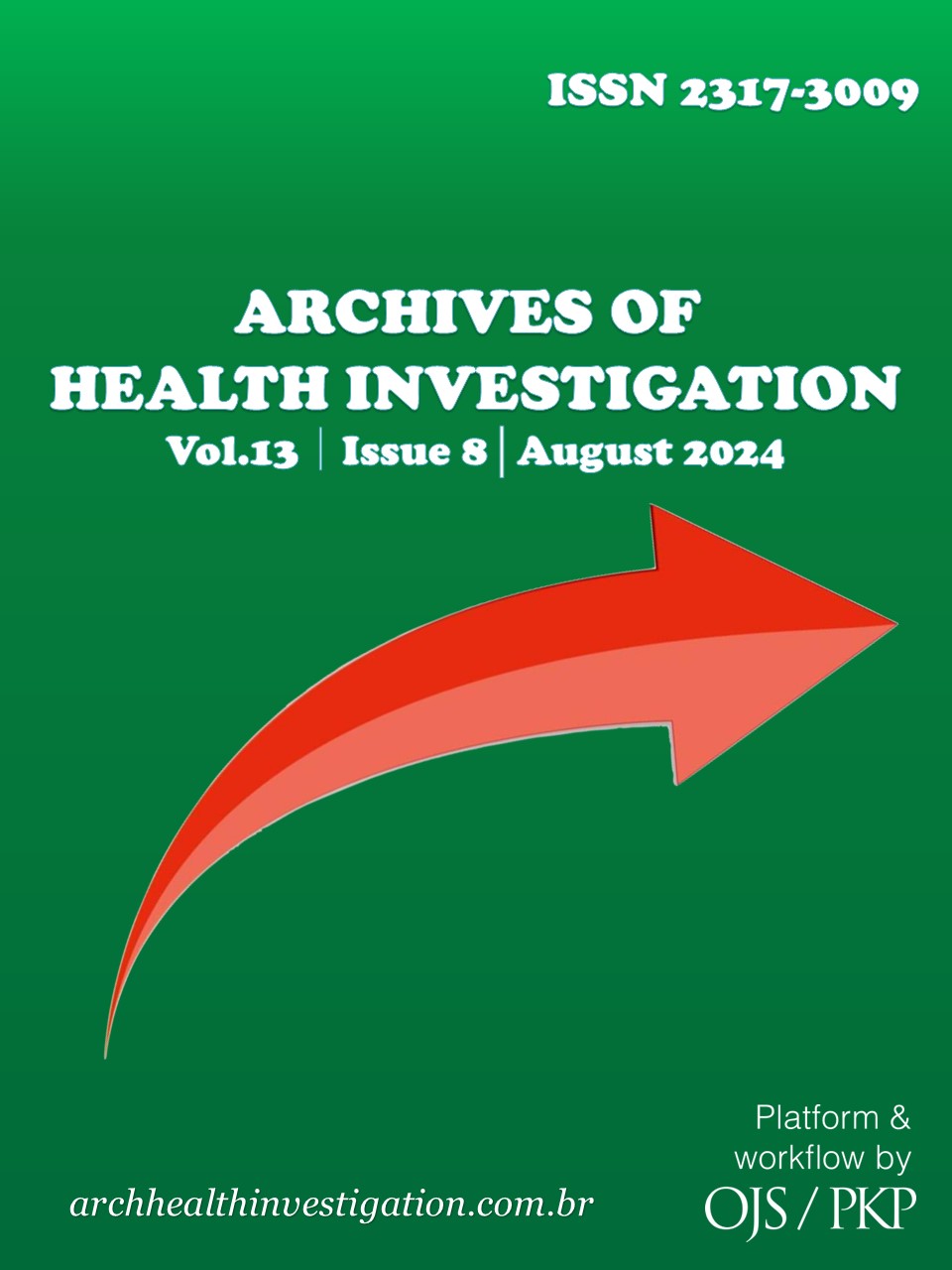Treatment of Mediastinitis and Ludwig's Angina: Case Report
DOI:
https://doi.org/10.21270/archi.v13i8.6335Keywords:
Ludwig's Angina, Mediastinitis, Hospital CareAbstract
Ludwig's angina is a severe infectious process, mostly odontogenic, of rapid evolution, which affects the submandibular, sublingual, and bilateral submental spaces, and may progress to a complication known as mediastinitis, a pathology with high mortality rates, more prevalent in men. For the treatment of serious infections, it is important to drain the purulent collection, remove the infectious focus, and administer antibiotic therapy. The objective is to report a case of Ludwig's Angina with progression to mediastinitis of a male patient, 42 years old, evaluated by the Oral and Maxillofacial Surgery and Traumatology team FOA-UNESP in a hospital emergency room with a history of dental treatment in element 38 years ago. three days. The patient underwent a surgical approach for drainage, removal of element 38, and installation of Penrose drains under general anesthesia. After two days, the patient developed chest pain and decreased saturation. After evaluating the chest tomography in conjunction with the medical clinic and the thoracic surgery team, it was observed that the patient had progressed to mediastinitis, requiring chest drainage in the operating room. The multidisciplinary follow-up was maintained until the complete resolution of the patient's condition. Therefore, odontogenic infections and other infectious foci in the cervical region must be meticulously managed and monitored, and in cases of complications, it is important to consider an interdisciplinary approach.
Downloads
References
Saifeldeen K, Evans R. Ludwig's angina. Emerg Med J. 2004;21(2):242-43.
Bridwell R, Gottlieb M, Koyfman A, Long B. Diagnosis and management of Ludwig's angina: An evidence-based review. Am J Emerg Med. 2021;41:1-5.
Fritsch DE, Klein DG. Ludwig's angina. Heart Lung. 1992;21(1):39-46.
Pokharel M, Dhakal A, Rajbhandari P, Madhup SK, Khadka L. A study of Deep Neck Space Infections at Kathmandu University Dhulikhel Hospital. Kathmandu Univ Med J (KUMJ). 2021;19(73):57-61.
Mahran H, Hassanein AG, Rizq M. Trends and Outcome of Aggressive Fascial Space Infections. Surg Infect (Larchmt). 2023;24(5):475-481.
Tami A, Othman S, Sudhakar A, McKinnon BJ. Ludwig's angina and steroid use: A narrative review. Am J Otolaryngol. 2020;41(3):102411.
Macrí P, Jiménez MF, Novoa N, Varela GA. Descriptive of a series of patients diagnosed with acute mediastinitis. Arch Bronconeumol. 2003;39(9):428-30.
Kluge J. Die akute und chronische Mediastinitis. Chirurg. 2016;87:469-77.
Sampaio DT, Alves JCR, Silva AF, Lobo Jr NC, Simões D, Faria W et al. Mediastinite em cirurgia cardíaca: tratamento com epíploon. Rev Bras Cir Cardiovasc 2000; 15(1):23-31.
Katsetos MC, Tagbo AC, Lindberg MP, Rosson RS. Esophageal perforation and mediastinitis from fish bone ingestion. South Med J. 2003;96(5):516-20.
Wheatley MJ, Stirling MC, Kirsh MM, Gago O, Orringer MB. Descending necrotizing mediastinitis: transcervical drainage is not enough. Ann Thorac Surg. 1990;49(5):780-84.
Brommelstroet M, Rosa JFTD, Boscardim PCB, Schmidlin CA, Shibata S. Mediastinite Descendente Necrosante Pós-Angina De Ludwig. J Pneumol. 2001;27(5):269-71.
Pereira AS, Shitsuka DM, Parreira FJ, Shitsuka R. Método Qualitativo, Quantitativo ou Quali-Quanti. In Metodologia da Pesquisa Científica; 2018.
Normando Jr GR, Tavares MAF, Azevedo IU de, Modesto A, Janahú A de JL, Feliz AH. Mediastinite por perfuração e ruptura do esôfago torácico. Rev Col Bras Cir. 2006; 33(6):361-64.
Marty-Ané CH, Berthet JP, Alric P, Pegis JD, Rouvière P, Mary H. Management of descending necrotizing mediastinitis: an aggressive treatment for an aggressive disease. Ann Thorac Surg. 1999;68:212-17.
Kappus S, King O. Mediastinitis. In: StatPearls [Internet]. Treasure Island (FL): StatPearls Publishing; 2024
Cirino LM, Elias FM, Almeida JL. Descending mediastinitis: a review. Sao Paulo Med J. 2006;124(5):285-90.
Aytacoglu BN, Ersoz G, Sucu N, Tamer L, Coskun B, Oguz I et al. Combined therapy of teicoplanin and caffeic acid phenethyl ester (CAPE) in the treatment of experimental mediastinitis in the rat. J Chemother. 2006;18(3):268-77.


